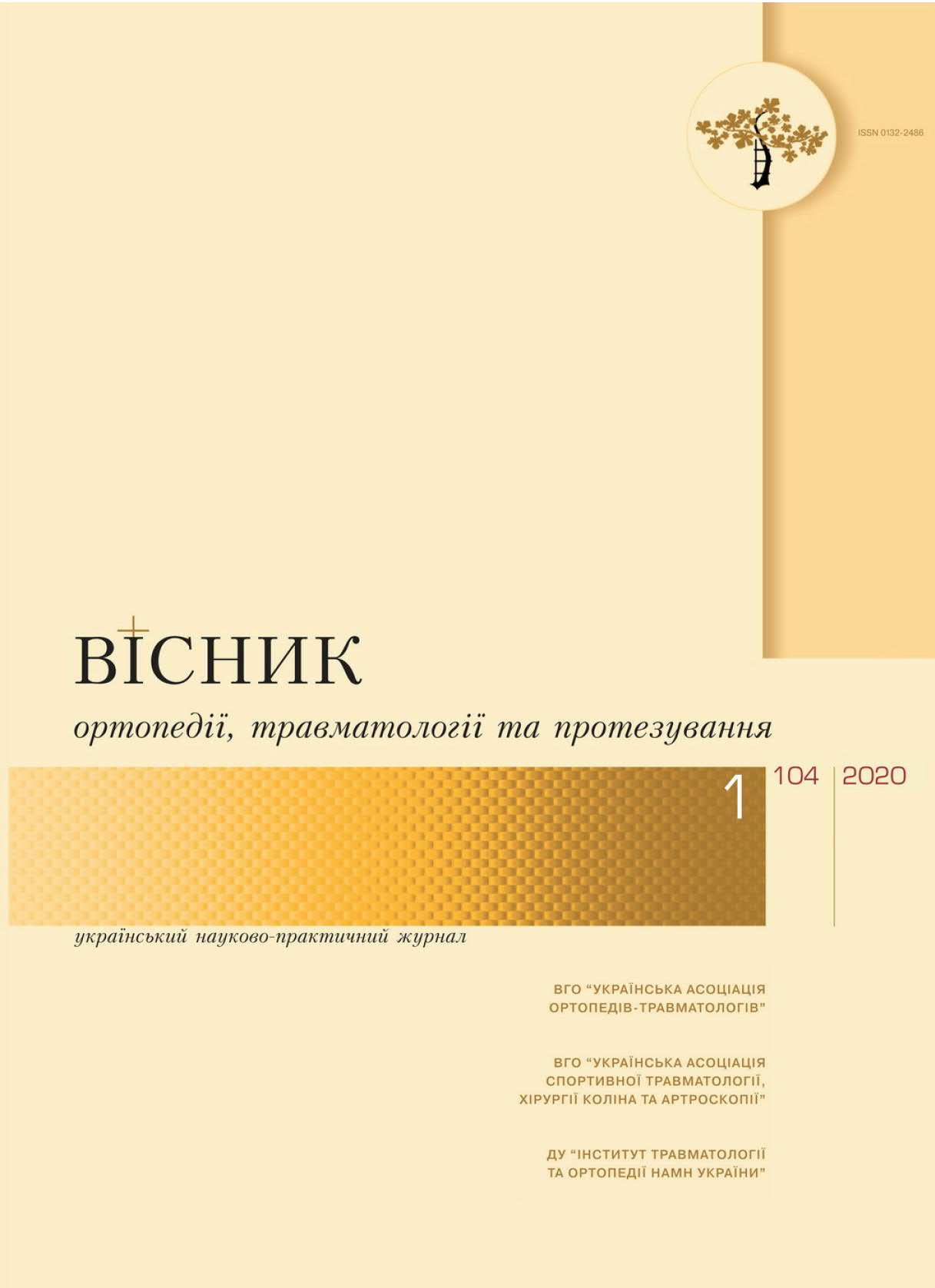Abstract
Summary. Relevance. The treatment of the consequences of intraarticular injuries of fingers is still one of the problems that requires further solution.
Objective: to improve the results of surgical treatment of post-traumatic persistent contractures of the interphalangeal joints of the fingers.
Materials and Methods. To analyze the effectiveness of the proposed treatment approach The results of treatment of 77 patients with post-traumatic contractures of the joints of the fingers, distributed into clinical groups and subgroups, depending on the severity of the injuries and the type of applied clinical rehabilitation program, were analyzed. Patients of the main groups were treated according to the proposed clinical rehabilitation program, indicators were analyzed before treatment, 3 months and 1 year after treatment using a point system for assessing the functional state of the hand and the QuickDASH scale. Results. According to the results of the analysis of 77 patients with the consequences of injuries of the interphalangeal joints using 2 systems for assessing the function of the interphalangeal joints, it was found that treatment of severe and moderate arthrogenic contractures with the method of distraction arthroplasty and corrective osteotomy improves functional results by achieving congruent relationships in joints and mobilization of the ligamentous apparatus.
Conclusions. Comprehensive treatment according to the proposed clinical rehabilitation program allows to increase the number of immediate positive results in the main subgroups of both groups to 22 (68.8%) versus 5 (11.1%) in the comparison subgroups (p<0.001) on a rating scale, and excellent and good results on the QuickDASH scale up to 20 (62.5%) and 12 (37.5%) versus 1 (2.2%) and 41 (91.1%) cases, respectively (p<0.001). When studying the long-term results of surgical treatment of arthrogenic contractures of the interphalangeal joints, positive results were obtained in 37 (63.8%) patients, satisfactory in 20 (34.5%) and unsatisfactory in 1 (1.7%) case according to the rating scale; 27 (46.6%) excellent, 30 (51.7%) good and 1 (1.7%) satisfactory results showed QuickDASH scale.
References
Kurinnyy IM. Surgical treatment of contractures of the joints of the fingers in patients with consequences of polystructural injuries. Chronicle of traumatology and orthopedics. Litopys travmatolohiyi ta ortopediyi. 2011;1-2: 55–60. (In Ukrainian).
Kaplan FT. The stiff finger. Hand clinics. 2010 May;26(2):191–204. [PubMed] [Google Scholar]
Harrison DH. The Stiff Proximal Interphalangeal Joint. The Hand. 1977;9(2):102–108. [PubMed] [Google Scholar]
Houshian S, Jing SS, Chikkamuniyappa C, et al. Management of posttraumatic proximal interphalangeal joint contracture. J Hand Surg Am. 2013;38(8): 1651–8.
Rongières M. Management of posttraumatic finger contractures in adults. Hand Surg Rehabil. 2018 Oct;37(5):275–280. [PubMed]
Hogan CJ, Nunley JA. Posttraumatic proximal interphalangeal joint flexion contractures. J Am Acad Orthop Surg. 2006;14(9):524–33.
Leibovic SJ, Bowers WH. Anatomy of the proximal interphalangeal joint. Hand clinics. 1994 May;10(2):169–178. [PubMed] [Google Scholar]
Smith-Forbes EV, Howell DM, Willoughby J, Pitts DG, Uhl TL. Specificity of the minimal clinically important difference of the quick Disabilities of the Arm Shoulder and Hand for distal upper extremity conditions. J Hand Ther. 2016; 49(1):81–88.
Bondaruk DO. Surgical treatment of patients with deformities of the fingers due to lesions of the extensor tendons: abstract. diss. Cand. honey. Sciences: 14.01.21. Donetsk, 2014. 35 p. (In Ukrainian).

This work is licensed under a Creative Commons Attribution 4.0 International License.

